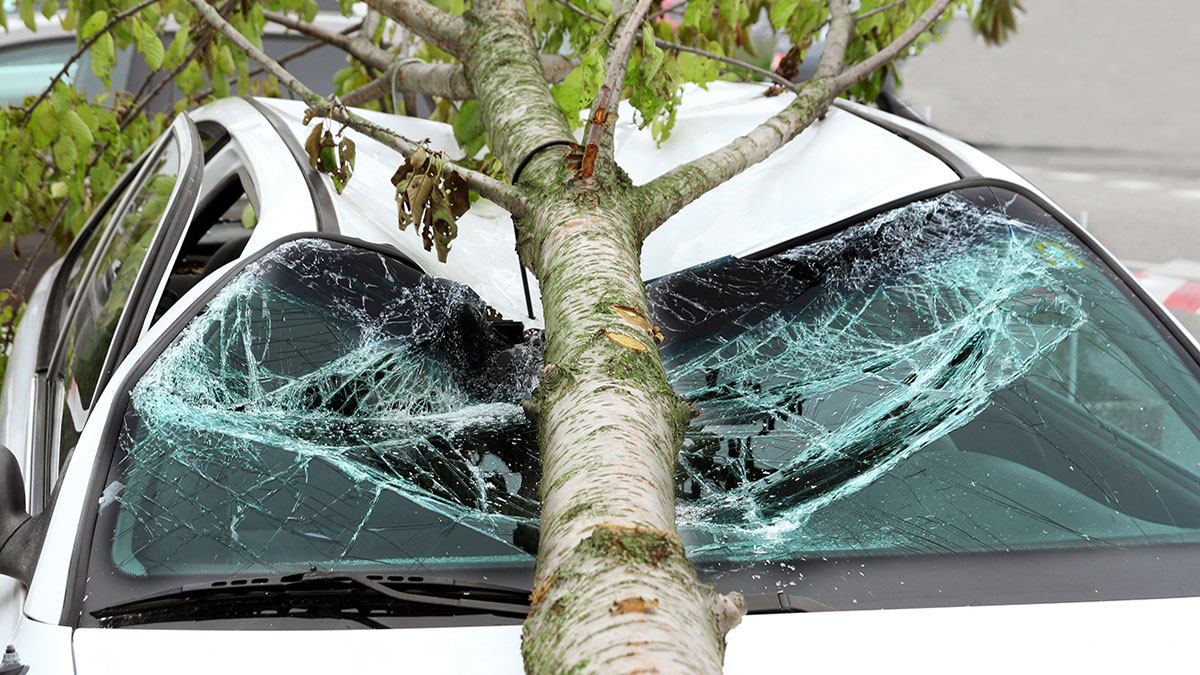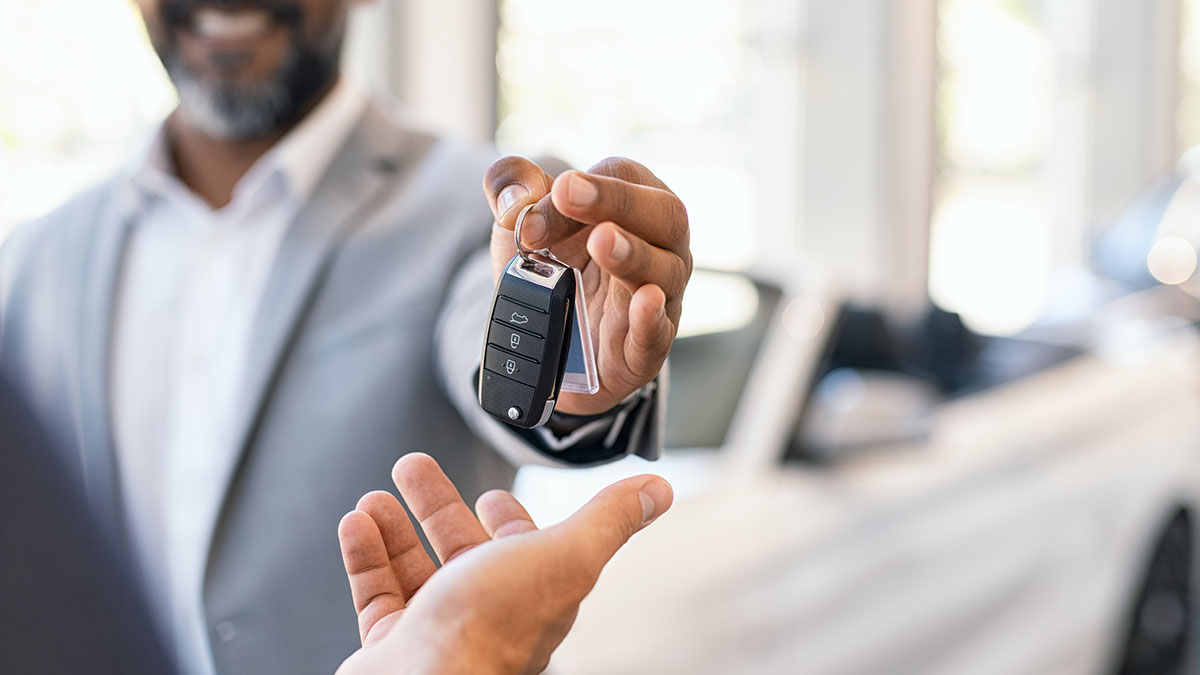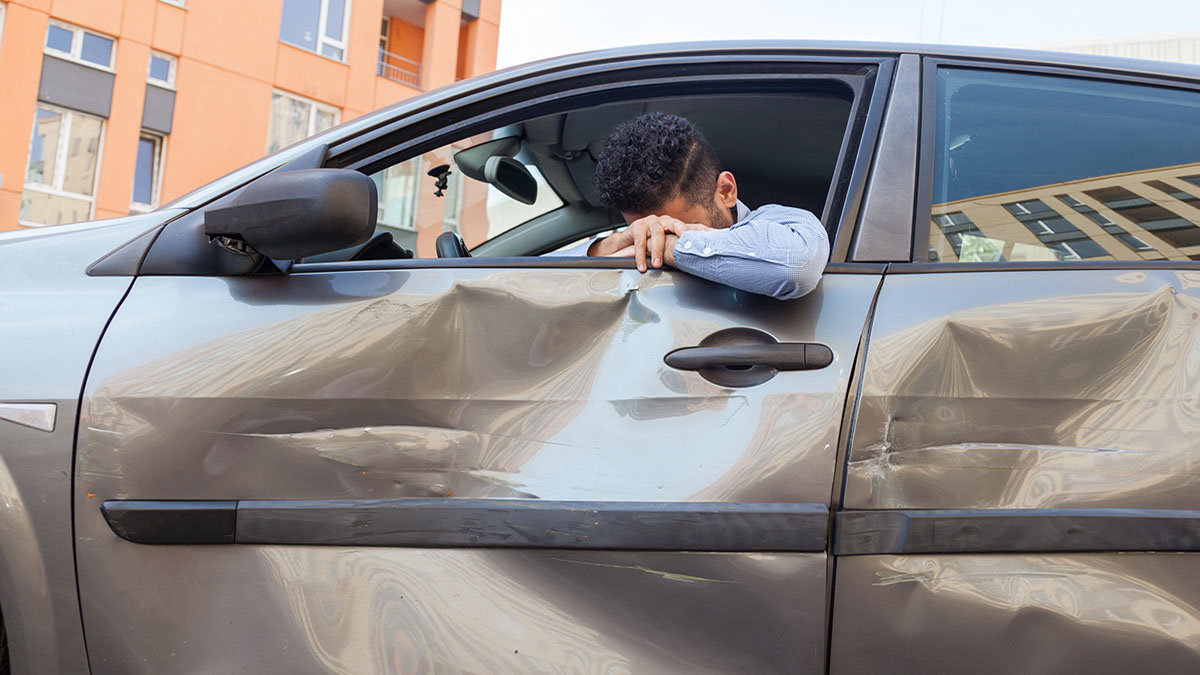Cuando se trata de tu póliza de seguro de auto, el seguro de responsabilidad civil es una parte fundamental para mantenerte seguro en la carretera. En el caso de que te encuentren culpable en un accidente, el tener la cantidad correcta de seguro de responsabilidad civil podría ayudarte a no perder miles de dólares pagando las lesiones corporales o los daños a la propiedad de otra persona.
Más importante aún, sin un seguro de responsabilidad civil para auto, las autoridades estatales podrían considerar que no tienes suficiente seguro. Si te detienen, puedes recibir una multa o verte obligado a pagar multas por no tener la cobertura mínima estatal.
¿Qué es el seguro de automóvil de responsabilidad civil y cómo saber si tienes suficiente? Al entender cuánta cobertura debes tener, puedes prepararte financieramente en caso de que tengas un accidente de auto.

¿Qué es Seguro de Responsabilidad Civil para Auto?
El seguro de responsabilidad civil para auto es uno de los muchos beneficios individuales que componen un plan de seguro de auto tradicional. Lo más importante de la cobertura de responsabilidad civil es cómo te ayuda en caso de un accidente de auto.
En la mayoría de los estados, los accidentes se resuelven asignando la culpa. Cuando las agencias de la ley realizan una investigación, las acciones de cada conductor determinan en última instancia quién es responsable del accidente o si la responsabilidad se puede dividir entre los dos. El que sea “culpable” generalmente pagará los daños usando su cobertura de seguro de auto de responsabilidad civil.
Aunque los accidentes de auto ocurren todos los días, sus acciones inmediatamente anteriores podrían determinar si tú eres “culpable”. Si manejas distraído porque estabas hablando por teléfono, frenaste demasiado tarde y le chocaste por detrás a otro conductor, o tuviste un accidente al pasar un semáforo en rojo, podrías ser declarado responsable del accidente, lo que podría aumentar tu pago mensual de tu seguro. En este caso, tu póliza de seguro de auto de responsabilidad civil podría pagar los daños asociados con el incidente.
¿Qué cubre el Seguro de Responsabilidad Civil para Auto?
El seguro de responsabilidad civil usualmente se divide en tres límites máximos de cobertura diferentes, cada uno cubre una parte determinada de los daños causados en el accidente. Se aplica un límite de lesiones corporales por persona a los daños por lesiones corporales incurridos por cada persona, un límite de lesiones corporales por accidente se aplica a los daños por lesiones corporales incurridos por todas las personas en cualquier accidente y un límite de daños a la propiedad se aplica a todos los daños a la propiedad en cualquier accidente.
Lesiones Corporales por Persona
Los accidentes automovilísticos no sólo doblan los bastidores de automóviles y rompen las llantas, sino que también pueden provocar lesiones. En accidentes de alta velocidad o incidentes en los que los vehículos se voltean, las personas en esos autos pueden terminar con cortes, huesos rotos o incluso conmociones cerebrales. Si tienes la culpa, es posible que debas apoyarte en tu cobertura de seguro de responsabilidad civil para auto.
Como parte de tu seguro de auto de responsabilidad civil, el límite de lesiones corporales por persona cubre lesiones si se te considera “culpable”. Los pagos cubrirán daños por lesiones corporales de una persona herida en un accidente, como facturas médicas, hasta el límite máximo. Por ejemplo: si tienes una póliza con $75,000 de cobertura por lesiones corporales por persona, el límite podría pagar una ambulancia a la sala de emergencias, facturas médicas o visitas a especialistas por alguien lesionado, hasta el límite máximo por persona.
Lesiones Corporales por Accidente
Aunque tu seguro de responsabilidad civil tiene un límite de lesiones corporales por persona, el límite por persona está sujeto a un límite máximo de lesiones corporales por accidente. El límite de lesiones corporales por accidente limita cuánto podría pagar tu póliza de seguro por accidente, sin importar cuántas personas resultaron lesionadas.
¿Cómo se aplica el límite de lesiones corporales por accidente? Como ejemplo: te encuentran “culpable” en un accidente, y había cuatro personas en el otro automóvil. Si todos resultaron heridos y tuvieran que ir al hospital, tu límite de lesiones corporales por persona se aplicaría a las facturas médicas por la atención de cada persona lesionada en el accidente, pero tu póliza sólo pagaría hasta el límite máximo de lesiones corporales por accidente. Si tu límite de lesiones corporales por accidente es $225,000, tu póliza de responsabilidad civil solo pagaría las facturas hasta este máximo en las que incurran todas las personas lesionadas en cualquier accidente.
Responsabilidad por Daños a la Propiedad
Mientras los accidentes de auto pueden “totalizar” tu automóvil, es posible que no sea lo único roto después de una colisión. Si terminas “en falta” en un accidente de auto, también podrías ser responsable de dañar o destruir la propiedad de otra persona, como el automóvil de la otra persona implicada en el accidente o la cerca alrededor de la propiedad de otra persona. Como parte de tu seguro de auto de responsabilidad civil, la cobertura de responsabilidad civil por daños a la propiedad puede ayudarte a pagar los daños a la propiedad de otra persona implicada en el accidente.
Por ejemplo: si tu causas daños al auto de otra persona al chocar con tu auto y tú tienes la culpa, la parte de daños a la propiedad de tu seguro de responsabilidad civil podría pagar los costos de reparación de la propiedad dañada. Al igual que tus otras coberturas, el beneficio por daños a la propiedad está sujeto a un límite máximo. Si tu cobertura tiene un límite de $75,000, tu póliza de seguro podría pagar por daños a la propiedad hasta esa cantidad.
¿Se Requiere un Seguro de Responsabilidad Civil de Autos en Todos los Estados?
Cada estado tiene un requisito de seguro de responsabilidad civil para auto diferente para sus conductores con licencia, incluyendo los niveles mínimos de cobertura. La cantidad de seguro que necesita dependerá de dónde vives.
Tal como está hoy, la mayoría de los estados tienen leyes de “responsabilidad extracontractual,” que requieren que los conductores tengan un seguro de responsabilidad civil para los vehículos que manejen. Si se les encuentra responsables de un accidente auto, sus beneficios de seguro de automóvil deben poder pagar las lesiones corporales de las personas lesionadas como resultado del accidente, así como cualquier propiedad dañada inmediatamente después. Además, un accidente culposo se puede informar en tu registro de manejo, lo que podría aumentar las tarifas de tu seguro.
Sin embargo, el Instituto de Información de Seguros señala que 12 estados, Puerto Rico y Washington D.C., se consideran estados “sin culpa”. En estos estados, los conductores deben tener pólizas con beneficios de “protección contra lesiones personales” de acuerdo con los requisitos de su estado. En lugar de pagar en base a la culpa, los beneficios de protección contra lesiones personales permiten a los titulares de pólizas lesionados obtener reembolso bajo su propia póliza sin importar quién tuvo la culpa del accidente.
Esto no significa que no puedes comprar una cobertura de seguro de responsabilidad civil de auto si vives en un estado “sin culpa”. Los estados “sin culpa” todavía requieren que los conductores compren un seguro de automóvil de responsabilidad civil para brindar cobertura por daños a otras personas involucradas en el accidente, donde los daños no son recuperables por la otra persona bajo los beneficios de protección contra lesiones personales. La ventaja clave de elegir suficiente cobertura de responsabilidad además de los beneficios de protección contra lesiones personales es que podría reducir potencialmente las probabilidades de que un accidente termine en una demanda costosa al pagar las lesiones de la otra parte que no están cubiertas por sus beneficios de protección contra lesiones personales.
¿Cuánto Seguro de Responsabilidad Civil para Auto necesito?
Aunque se requiere que todos tengan un seguro de responsabilidad civil para autos, no existe una póliza de seguro de automóvil “única para todos” para todos los conductores. Tu situación es única y el beneficio máximo que podrías necesitar puede ser diferente al de tu vecino, tu familia o alguien que conduzca exactamente el mismo vehículo que el tuyo. ¿Cómo determinar cuánta cobertura de responsabilidad civil necesitas en tu póliza de seguro y cuánto debe pagar por el seguro de automóvil?
Según el Instituto de Información de Seguros, el reclamo promedio por lesiones corporales en 2019 en los estados donde se le puede asignar la culpa a una parte fue de $18,417. En el mismo grupo de 38 estados, el costo promedio de reclamos por daños a la propiedad fue de $4,525. Aunque las probabilidades de tener un accidente con lesiones corporales o daños a la propiedad pueden parecer pequeñas — los datos del III muestran que el 1.07% de los estadounidenses presentaron un reclamo por lesiones corporales, mientras que el 3.18% presentó un reclamo por daños a la propiedad — esta es una situación en la que no quisieras probar los límites de tu seguro de responsabilidad civil de auto.
Mientras que tu puedas pensar que los niveles de seguro de automóvil de responsabilidad mínima estatal son adecuados, es posible que te sorprenda de lo bajos que son los requisitos. Algunos estados solo requieren que los conductores tengan $15,000 en cobertura de lesiones corporales por persona y tan solo $5,000 en cobertura de daños a la propiedad por accidente. Si tuvieras un accidente grave que resultara en lesiones a otros automovilistas, es posible que los niveles requeridos por el estado no cubran el reclamo completo, lo que podría exponerte a una responsabilidad adicional de tu bolsillo.
Cuando empieces a comparar cotizaciones de seguros de auto en línea y considerando cuánto seguro de responsabilidad civil para auto necesitas, comienza primero mirando tu cuenta de ahorros. En caso de accidente, ¿podrías pagar los daños a otros conductores o propietarios? Aunque tu estado puede tener un requisito mínimo de seguro de responsabilidad civil, puede ser mejor comprar más para tener cobertura adicional. Al tener una póliza con límites máximos más altos, tu compañía de seguros puede pagar más antes de que tengas que pagar de tu bolsillo, lo que puede evitar que uses tus fondos de emergencia.
Finalmente, considera tu presupuesto mensual y cuánto podrías pagar por el seguro de auto. Ya que un límite máximo de seguro de responsabilidad civil más alto puede aumentar tu pago mensual, mantener la cobertura adicional puede cubrir pagos adicionales si te encuentran responsable en un accidente de auto. Una vez más, tener una prima de seguro un poco más alta podría evitar que pierdas una parte de tus ahorros de emergencia.
Obtén las Mejores Tarifas en Seguros de Responsabilidad Civil para Auto de The General
Conseguir el nivel adecuado de seguro de responsabilidad civil no tiene qué ser un desafío. The General puede ayudarte a encontrar la cantidad perfecta de cobertura para mantenerte en la carretera sin preocuparte por tu situación financiera. Comienza por obtener una cotización hoy y maneja con confianza la cobertura adecuada para tu estilo de vida.








